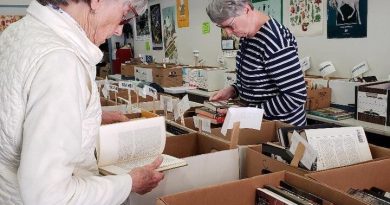Fire district collaboration update
In recent months there have been several accounts of a potential consolidation or joint agreement involving Chester Public Utilities District, Prattville-Almanor Fire District and West Almanor Community Services District.
These accounts stem from periodic formal meetings and informal discussions between the agencies as they look toward the challenges of providing fire and emergency medical services in a changing community.
Their focus has been on sharing information and ideas while exploring mutual concerns and resources. This process builds on many years of cooperation and mutual aid between the districts.
Over the course of these interactions the parties have learned that local challenges are certainly not unique. Many, if not most, rural emergency response agencies suffer from similar issues of limited financial resources and a declining number of volunteers.
Nationwide it is becoming increasingly difficult for volunteer organizations in general to attract new participants. The matter becomes an even greater challenge when an emergency response organization requires substantial training due to mandates imposed by government bodies.
Over time, this trend leads to increased costs to taxpayers, as professional responders have to be hired to replace former volunteers.
Locally, the districts hold periodic joint training drills, regularly share resources and provide mutual support during emergency calls. Coordination between the districts results in very little duplication of specialized equipment.
For example, the air trailer used to refill firefighters’ breathing equipment at the scene of an incident is a shared asset, housed at one fire station, but transported to the scene wherever it might be. This kind of mutual sharing helps reduce overall costs and makes better use of available response resources.
The three parties to these recent discussions have been very pleased with the level of cooperation and teamwork found in local emergency operations. What is troublesome is the future uncertainty as older volunteers retire and insufficient numbers of new volunteers come forward.
Each of the districts has a somewhat different population base, residency pattern and history of emergency calls, but they share a common goal of providing necessary emergency services to their communities.
At this point in the process they have individually or collectively discussed several different approaches to future emergency service staffing, but have not identified a preferred option, other than continued volunteer service for as long as practical.
Volunteers remain the least expensive alternative and also foster an important neighbor-helping-neighbor theme in emergency response.
These collaborative discussions are expected to continue periodically as the situation evolves.
If and when an appropriate mutual approach is identified, the districts would undertake more formal arrangements, perhaps through a joint powers agreement. However, that time is not now.
For additional information or answers to questions on the issue of fire district consolidation, contact Dale Knutsen, WACSD, at 259-2287.



